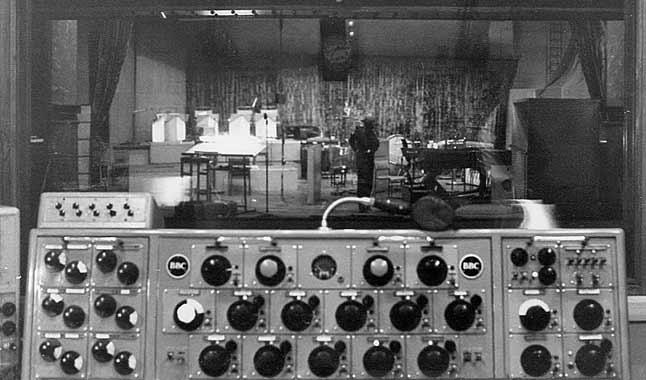
As a young boy of eleven I had my first experience of BBC Radio at the "Playhouse Theatre" in Hulme, Manchester. A family friend had given me tickets for a BBC Radio Variety show being recorded there. The programe was a typical LE show that starred the Northern Dance Orchestra, Ken Dod, the Berry Sisters and Ken Goodwin. I was hooked. I wanted to work in Broadcasting!
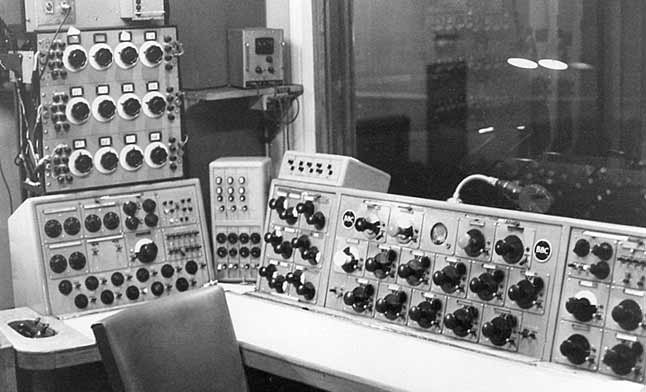
Some ten years later, in 1972, I had the chance to again visit the Playhouse this time as a member of the BBC Manchester Audio Unit. These are the pictures I took. The resident engineer was Jim Marrs. The SM was one David Fleming-Williams. I remember him being very proud of his single compressor/limiter; you can see it in the corner to the right of the bank of OBA/8 sub-mixers (above). Note the talkback mic - a 4038, no less. I remember that the magnets of the mic used to stick to the mild steel frame of the desk!
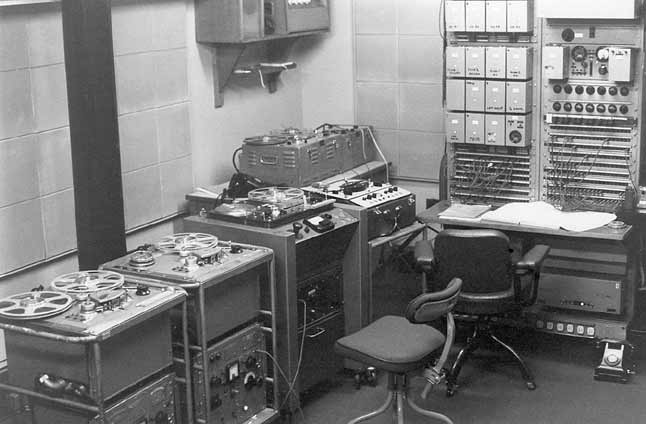
The tape machines in the photo are a couple of TR90s, a Leevers-Rich, a Brenell (here loaded with a tape loop for flutter-echo) and, above the latter, an OB-cased Leevers. The Playhouse had an echo-plate that lived in the standby battery room behind the control room.
My job on that particular day was to record NDO items onto "W" spools for Radio 2. Recording numbers started with three letters which indicated some technical details and where the recording was made. A TLN, for example, was recorded in London (the "LN" bit, though it was originally "LO") and was a mono, 15 i.p.s. recording on a NAB-centred 10.5" spool. AN SLN was the stereo equivalent. A YBS was mono, recorded at 7.5 i.p.s. in Bristol, and was on a 5" or 7" cine-centred spool. A WMR was recorded in Manchester at 15 i.p.s, mono and on a special type of 5" spool which had a larger than normal hub. This large finishing diameter gave faster starts when playing back the recording, and also reduced the risk of wow towards the end of the tape.
In the early 1960s some use of the "Playhouse" was made byTelevision but due to the lack of air-conditioning in any form TV production was not a success. In the 1980s with the advent of colour the "Playhouse" was used again for Television and the Manchester production of childrens choirs "We Want To Sing" was recorded there.
The last Radio programme recorded at the "Playhouse" was on the 15th of June 1986. This was "Farewell To The Playhouse." The programme consisted of a celebration of the 25 years of Comedy and Music that the "Playhouse" had contributed to BBC Radio. The guests for this final evening were Alyn Ainsworth, Brian Fitzgerald, Stan Kitchen, Les Dawson, Eli Woods, Harry Worth, Cardew Robinson, Bill Waddington, Kevin Kent, David Hamilton, Nigel Ogden, Bob Monkhouse, Ernie Wise, Ray Moore & Geoffrey Wheeler. "Farewell to The Playhouse" was produced by Mike Craig and was transmitted on the 25th August 1986.
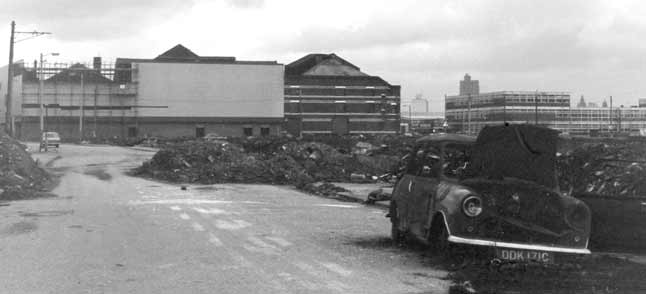
The Playhouse is the building to the right centre of the photograph. The building with the grey cladding to the left was a bingo hall but was originally a Rep Theatre, the Rep and the Playhouse being like a large "semi."
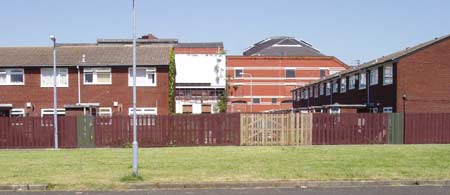
Chris Owen took this photo in June 2006, from nearly the same spot.
During the 70s & 80s Alan Ashton presented a weekly series of theatre and electronic organ music for Radio Manchester. There were several broadcasts, with audience, from the Playhouse utilising the BBC Theatre Organ No.3, a Wurlitzer, and he has supplied these two photos.
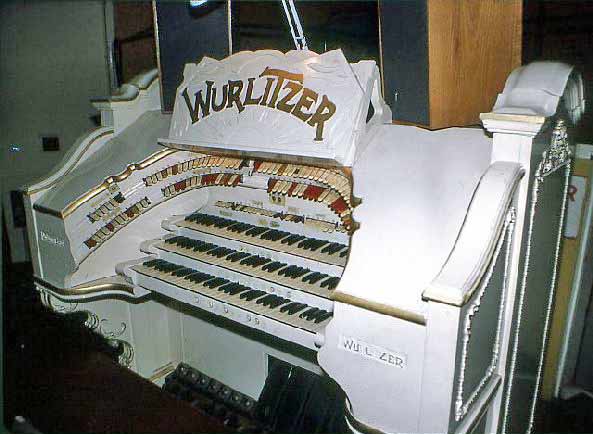
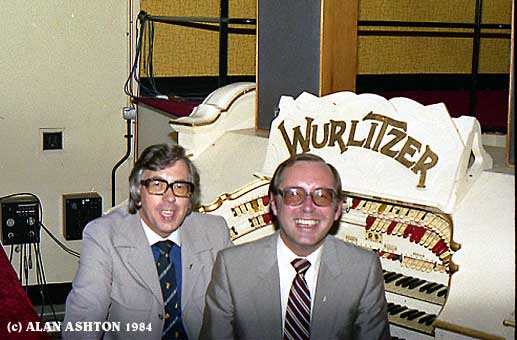
Alan Ashton with organist Keith Beckingham.
The final one was originally in the Empress Ballroom Blackpool. When it was decided to dispose of it the BBC bought it, reputedly for £1000 plus a further £4000 to have it installed in the Playhouse in 1970. The pipework was housed under the stage, but the console was in the far right hand corner of the balcony adjacent to the proscenium arch. It was at first quite difficult to play because the sound from the pipework ‘spoke’ out into the stalls and by the time the organist heard the notes he’d played...well it didn’t help with his timing! Hence two foldback speakers were then placed atop of the console and the sound adjusted to them to account for the time lag.
In 1985 the BBC decided to dispose of the organ, and quite a lot of the pipework went to enlarge another Wurlitzer organ in Worthing...where it remains to this day. The actual console and remaining pipework were then sold off to other organ enthusiasts.

